The old rocker in the picture was made in 1860 by a great inventor and innovator, Michael Thonet. I told you about Thonet when I said the story of the best-selling chair of all time, known as the "Thonet bistro chair no.14". Like the chair, Thonet's rocking chair is still a benchmark for designers and furniture manufacturers worldwide. That's why I think it deserves some attention from us. 🙂
Swings don't officially have a very long history. It was originally thought to have been invented by Benjamin Franklin, but American historians have found evidence of rocking chairs as far back as the early 18th century, when Franklin was just a child. I believe that these rocking chairs have been around since people started to work on their children's chairs and swings, the ones in the shape of hoopoes, as they were in our country. It is not possible that they didn't have the idea to make some curved supports for the legs, so that the chair could swing like the little tree in which the child was sitting.
But this is not about what I think but about historical data. So we come to Michael Thonet, the man who made the first industrial rocking chair. Thonet was a carpenter, a wood craftsman, who was born in 1796 in Germany. He invented the method of steam bending wood that is still used today. Starting with bending wood for boats - watering and heating - he worked his way up to steam-treating round rods of fagHe kept them in metal containers under steam for 5 hours, then took them out and immediately put them in molds. The time in the molds should not exceed 3 minutes because the wood would start to stiffen again and cracks would appear. This is exactly the method that is still used today for bending and which has been used for decades in our factories in Comănești and Pâncota. I am sure many people remember them.
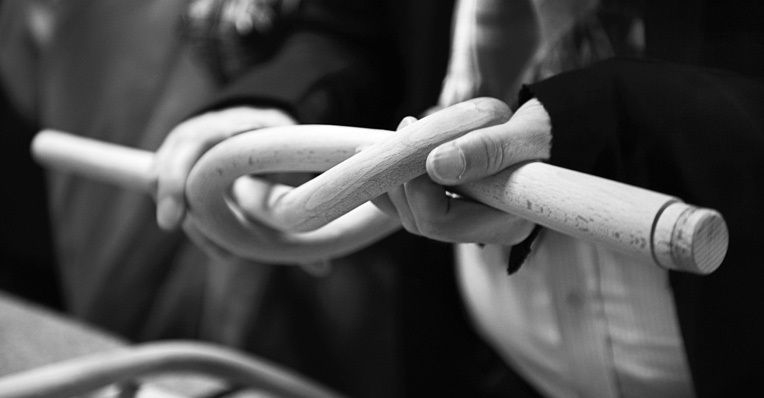
With the help of these curved elements Thonet managed to make one of the most elegant and delicate rocking chairs, and it has been reinterpreted over the years by many famous designers. It features elements of Roman and Greek architecture as well as Renaissance and colonial influences.

The year of birth is considered to be 1860, with no clear document indicating the year. However, the Thonet No 14 chair is known to have been the first chair made with curved elements and took its final shape in 1859. The factory set up by Thonet and his four sons began to produce furniture on an industrial scale, making furniture accessible to the middle classes, not just the privileged. Achieving ever larger productions and ever more varied designs, in 1883 Thonet published his first furniture catalog containing 21 pages and 219 designs. This catalog was soon followed by the second in 1886 and the third in 1888, which had 30 pages and 339 models. With the help of these catalogs, historians were able to establish 1860 as the year of manufacture for the rocking chair.

In 1876 another famous rocking chair is created, the Schaukelsofa No 7500. It was apparently the creation of August Thonet, one of Michael's sons. He had died in 1871, leaving the company to his four sons.
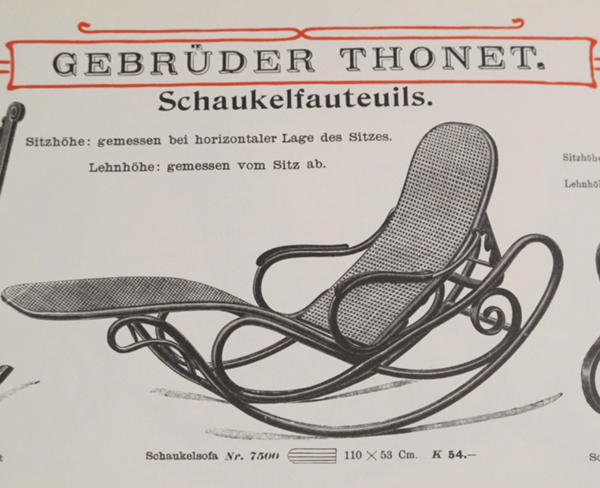
This rocking-chair was first made without arms, but shortly afterwards a model with arms was created, which was much more appreciated. It did not have as long a life as the No. 1 rocking chair, as in 1914 its industrial production ceased and in 1921 the last rocking chair was produced. During this whole period only 8000 No. 7500 rocking chairs were made, compared to 693000 in total. For this reason it is the most sought-after model by collectors.
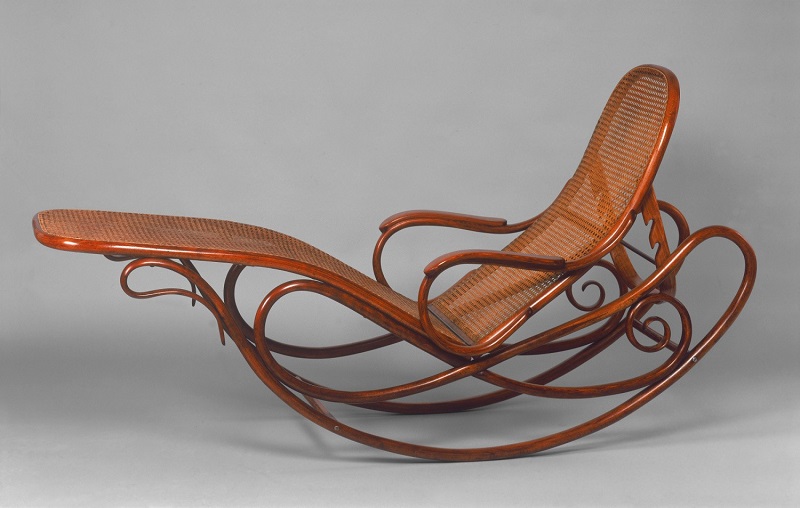
Like Café Chair No. 14, the rocking chair was also appreciated by many artists, appearing in several well-known paintings of the time. Renoir's "Woman in a rocking-chair" or James Jacques Tissot's "Last Evening" are just two of them.

forum source: artside.unialive.com
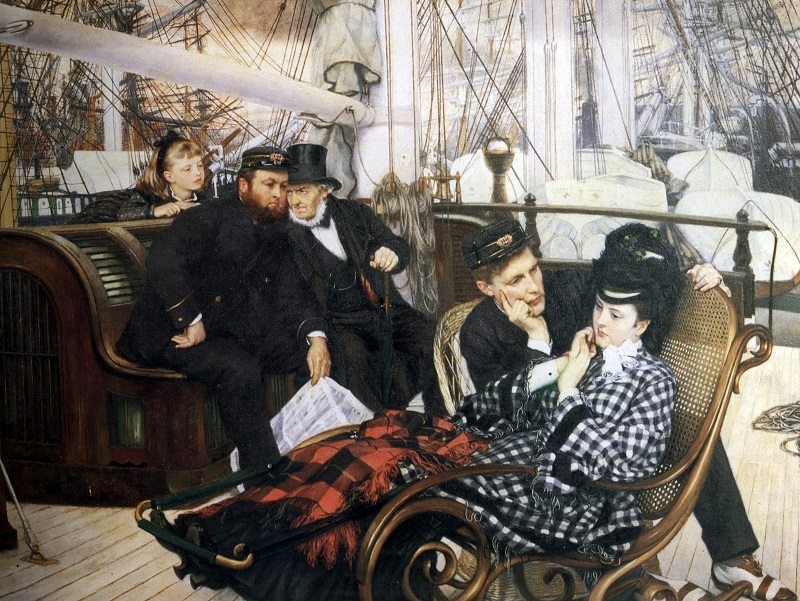
photo source: artside.unialive.com
One of the greatest modern lovers of rocking chairs was the American President John F. Kennedy. Having severe back problems his doctor recommended him to sit in one. Apparently, the "therapy" worked so well that Kennedy arranged to take one on Air Force One. He was so enamored of the rocking chairs that he gave them as gifts to everyone he knew, even to heads of state.
Thonet GmbH still manufactures chairs in Germany, run by the fifth and sixth generation Thonet. The famous Thonet No. 14 chair is now called the 214, but it's still made using the same method. There are other variations on the same theme, the 214K being as amusing as it is suggestive of the manufacturing method.
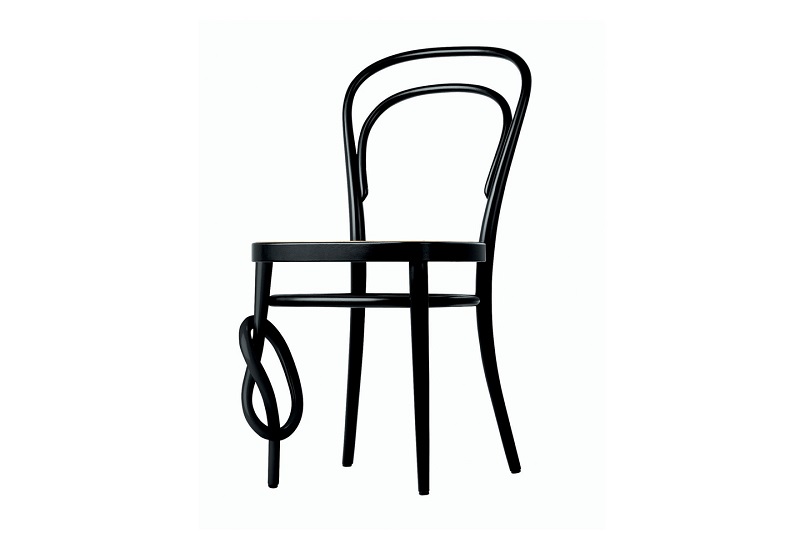
photo source: thonet.de
As for the No. 1 rocking chair, it is no longer made, but it seems that its spirit lives on in the latest generation models.
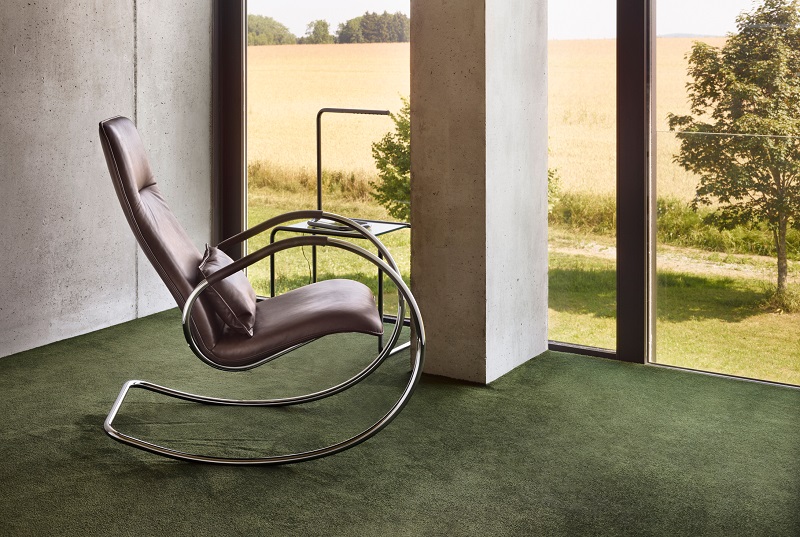

































This is not news. And my father used to make fishing rods out of horn wood, heating them by flame. But I saw the wooden church, whose 20×20 cm beams were curved to make the back of the church. I have seen such a work is true at only one church in Timis.
[...] an elastic wood that can bend very easily under steam. Since the Middle Ages it has been used for the construction of shooting bows and is still used [...]